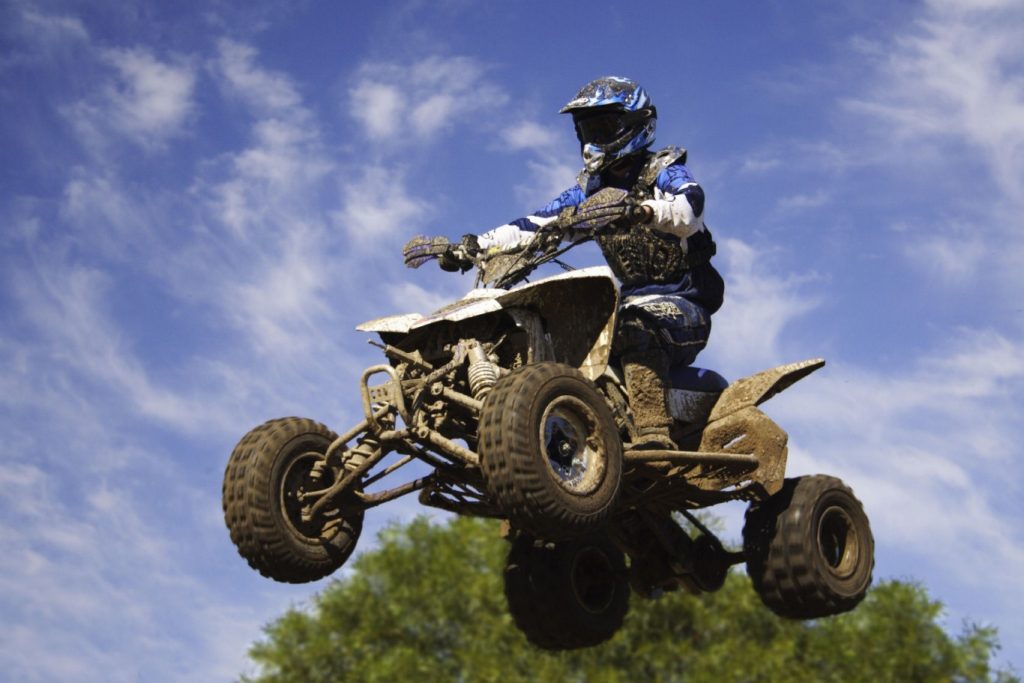Much is being done to protect the younger generation from the dangers of underage driving – yet children are allowed to drive on all-terrain vehicles [ATV’s] / quad bikes without supervision and formal training.
In recent research in the US the rate of injury and death to children under 16 driving ATVs was described as being of “epidemic” proportions. With the rapid increase in sales of ATV’’s in South Africa, it is important to face the facts and design solutions to achieve greater road safety for the younger generation:
International research has indicated that:
- 500,000-plus children were injured in the US riding ATVs from 1982 to 2002. The number of ATV accidents, injuries and deaths has continued to climb every year since 1997
- In 2000, children under 16 accounted for approximately 40% of the total ATV-related injuries and deaths
- ATV-related injuries are six times more likely to result in hospitalization and 12 times more likely to result in fatalities when compared to bicycle-related injuries per 1,000 vehicles
- Children under 16 are more than twice as likely as older riders to require ER visits for injuries sustained while riding an ATV
- ATV-related injuries tend to be much more severe and more often require surgery and hospitalization than injuries received playing rugby, soccer or riding a bike
- ATV pediatric victims are younger; more severely injured and stay longer than the average trauma patient
- Those involved in ATV crashes were more apt to sustain multiple injuries and often require surgical intervention
- The most common injuries sustained by children driving ATVs include striking the ground, hitting fixed objects like trees and rolling backwards. The majority of these injuries affect the child’s head or spine.
Reasons for ATV/ quad bike injuries amongst children
- Children younger than 16 do not have the physical size, strength, coordination or motor skills to operate an ATV, especially adult-sized ATVs that reach speeds over 60 miles per hour
- Young drivers might have the mature judgement and coordination required for the safe handling of an ATV
- Safe driving requires more than just long arms and legs – but also perceptual abilities
- Children riding adult-sized ATVs, inadequate driver training and not enough helmet use are contributing factors to many ATV crashes
Safety Checks
All drivers of ATV’s should wear protective gear at all times. Apart from the prescribed protective gear such as helmets, goggles, face shields etc there are basic “ machine fit criteria” that could be followed. These criteria include the following:
- Do the driver’s feet easily reach the foot pegs for the ATV?
- Can the driver comfortably reach the handlebars while sitting in an upright position?
- Can the driver easily manipulate the levers and shifter on the machine?
- Can the driver turn the handlebars from lock to lock
- Does the driver understand and can they operate the starting and stopping features of the ATV?”
Recommendations
- No one under the age of 12 should operate an ATV and children under the age of 16 should not drive an ATV over 90 cc
- It is important to make sure that the ATV fits the rider in both size and strength
- While operating an ATV, a child must be under the continuous visual supervision of a person 18 years of age or older
- Pre-ride inspection will provide further protection to young drivers – The most common checks include tires, wheels, controls, lights, switches, oil, fuel, chain/drive shaft, and chassis
- More reliance should be placed on warning labels and the owner’s manual to communicate key safety messages
- Safety training should be available and recommended to new purchasers of ATV’s
Parental Supervision
Parents often don’t perceive the risks associated with ATV’s. They need to equip themselves with objective information about the dangers associated with ATVs and to make informed decisions about whether or not an ATV is appropriate for their children. Much of the dangers can be averted by parental training and adult supervision over young drivers.
It is also recommended that parents pay close attention to the recommendations by the West Virginia University Extension Service when teaching a child the rules for ATV operation:
- Wear protective devices and clothing
- Never ride double
- Always tell someone where you are going and when you expect to return
- Do not drink alcoholic beverages or use drugs while riding
- Know the machine before operating it
- Take a safety course before first-time operation
- Always directly supervise young riders
- Always be courteous to others
- Ask permission before riding on another person’s land
- Obey laws and regulations
- Never operate an ATV on pavement or on a public road
- ATVs should be used only during daylight hours
– See more at: http://www.arrivealive.co.za/pages.aspx?s=1&i=1747&page=Quad-Bikes-and-Children#sthash.baA4WAn3.dpuf
